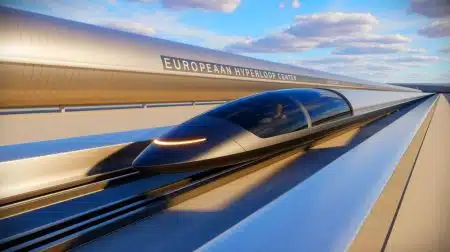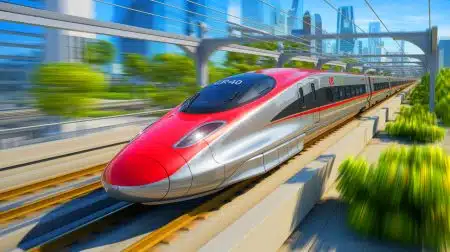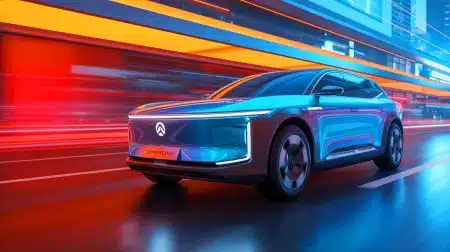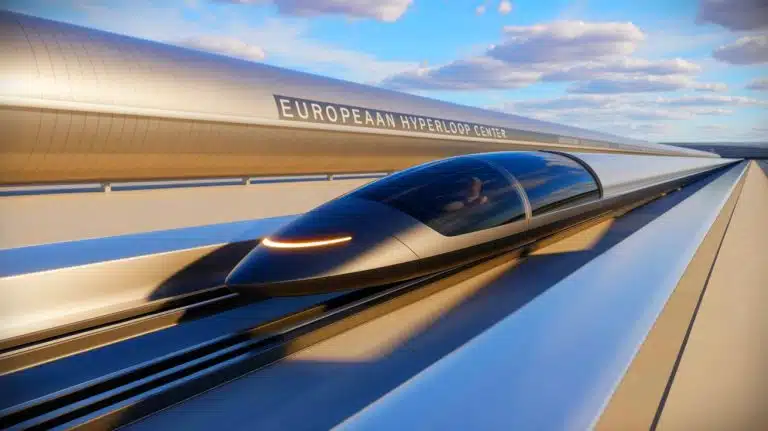| IN A NUTSHELL |
|
The realm of high-speed transportation is witnessing a groundbreaking evolution as the hyperloop—a concept once confined to theoretical discussions—moves closer to becoming a reality. At the forefront of this innovation is Hardt Hyperloop, a Dutch technology company, which recently set a new European speed record with its hyperloop transport system. During a critical test at the European Hyperloop Center in Veendam, Netherlands, the vehicle not only reached a speed of nearly 53 miles per hour but also successfully executed a lane-switch maneuver. This achievement signifies a pivotal step in the advancement of hyperloop technology, hinting at a future where travel is faster, safer, and more efficient.
Breaking Speed Records
In the recent test, Hardt Hyperloop’s vehicle achieved a remarkable acceleration of 0.3G on a 1,379-foot test track. Within the first 460 feet, it reached its top speed of 53 mph. The test further solidified its credentials by performing a lane-switch maneuver over a 509-foot section of the track, showcasing the potential for real-world application. The vehicle then smoothly decelerated to a stop in the remaining 328 feet, surpassing its original design speed of 50 mph. This feat marks a significant leap from theoretical designs to practical systems, setting a new benchmark in European hyperloop development.
According to Roel van de Pas, managing director at Hardt Hyperloop, the test represents a major advancement in scalable hyperloop technology. A standout feature of Hardt’s system is its lane-switching mechanism, which boasts zero moving parts. This attribute enhances the reliability and capacity of hyperloop networks, addressing longstanding challenges in scalability and high-speed performance. Traditional hyperloop designs often struggled with integrating reliable systems that could perform at high speeds, but Hardt’s recent success tackles these obstacles head-on.
Next-Gen Mobility Arrives
Since its first successful test at the European Hyperloop Center last year, Hardt Hyperloop has conducted over 750 test missions. These efforts have led to numerous innovations, including a motionless lane-switch mechanism and a safer magnetic levitation system. Furthermore, Hardt has optimized its vehicle by reducing bogie weight by 45 percent and increasing thrust by 50 percent. With these advancements, the company sees no technical barriers to achieving speeds of 435 mph, reinforcing the potential for high-speed, long-distance transportation.
Kees Mark, managing director of the European Hyperloop Center, emphasized the significance of these achievements as a testament to European innovation in sustainable transport. The future roadmap for Hardt Hyperloop includes a 1.9 to 3.1-mile demonstration route, with plans to extend to a 19 to 31-mile operational line. This progression is part of their strategic plan for commercial deployment, setting the stage for a new era in mobility.
How supercars are changing the face of automotive technology
Global Implications and Future Prospects
The implications of Hardt Hyperloop’s achievements extend far beyond Europe. Global interest in hyperloop technology is gaining momentum, with Italy approving a demonstration line between Venice and Padua. Germany has included a pilot route in its coalition agreement, while India is actively considering implementing the technology. Meanwhile, China aims to establish a fully operational hyperloop corridor between Shanghai and Guangzhou by 2035.
These developments underscore a growing recognition of hyperloop’s potential to revolutionize transportation by offering a faster, more sustainable alternative to current systems. The international interest and investment in hyperloop technology reflect its promise to address some of the most pressing transportation challenges of our time, including congestion, pollution, and inefficiency.
The Road Ahead
As Hardt Hyperloop continues to push the boundaries of what’s possible in high-speed transportation, the world watches with anticipation. The successful tests at the European Hyperloop Center mark a critical juncture in the journey toward a commercially viable hyperloop system. While challenges remain, the progress made thus far is a strong indicator of the potential for hyperloop technology to transform the way we travel.
The question now is how quickly these technological advances can be translated into operational systems that benefit the public. As nations worldwide explore the feasibility of hyperloop routes, the potential for a new era of transportation is on the horizon. How will these developments shape the future of mobility, and what role will global cooperation play in achieving widespread adoption of hyperloop technology?
Did you like it? 4.5/5 (27)







Wow, 435 mph! 🚀 Can’t wait to see this in action!
Wow, 435 miles per hour! That’s faster than my internet connection! 😂